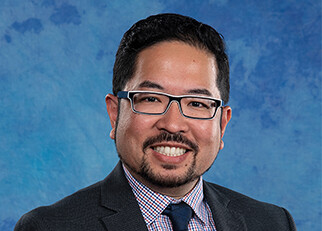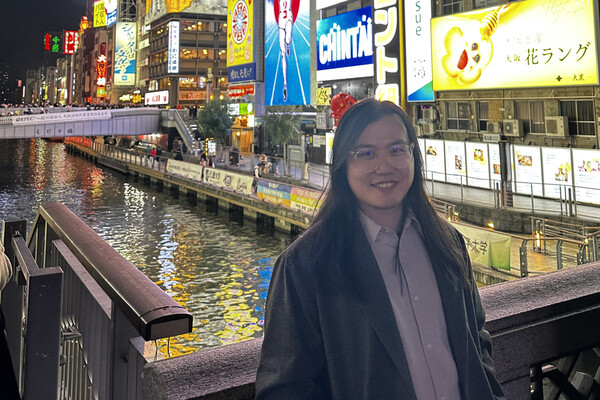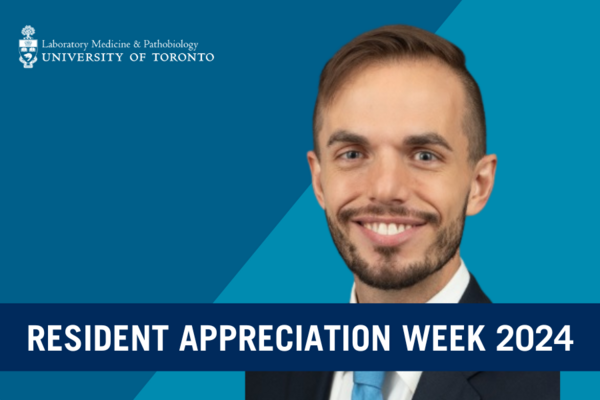My time as an Anatomical Pathology resident: Dr Carlo Hojilla

While completing his PhD in Medical Biophysics at U of T, Dr. Carlo Hojilla had the opportunity to work with a pathologist which left a huge impression on him.
“Handling and seeing tissue like that really opened my eyes,” says Hojilla. “After conducting some research, I realised this was a profession that interested me and one I wanted to pursue.”
After defending his thesis and Undergraduate Medical School, he joined UofT’s Residency Training Program in Anatomical Pathology (AP), followed by a Fellowship in Hematological Pathology (HP).
Now an Assistant Professor in Laboratory Medicine & Pathobiology at the University of Toronto, and with clinical appointments at Mount Sinai and Markham-Stouffville Hospitals, he is educational lead for residency training and recently won an award for his course development.
“I applied to the Anatomical Pathology program at U of T for several reasons,” explained Hojilla. “LMP is incredibly rich in terms of the disciplines it can offer, resources it has, and connections you can make. The network of hospitals you can gain experience in, and the world-leading people you can work with, are amazing. I had a young family and was quite firmly rooted in Toronto so applying to this program was a no brainer for me. I’m also a very practical person and, through my research, thought that the AP/HP combination would give me the most practice opportunities.”
Pace yourself: it’s a long ride
“I was constantly nervous during my residency,” laughs Hojilla. “I was always worried about something. Every little thing felt like a big obstacle that needed to be challenged.”
He was worried about his lack of knowledge when starting the program; exams; whether he’d get a fellowship; taking time off for his family; and whether he’d get a job.
“When you’re at that particular stage it feels like it’s your biggest concern, ever, but there’s something else always coming after it. I try to advise the trainees to just pace themselves. Don’t worry too much at the beginning otherwise you’ll get overwhelmed – you’ve got five years of residency so don’t spend it worrying like I did!”
He likens the program to a five-year job interview.
“It’s a very small community and we all know each other,” he explains, “If you start with a great attitude from day one, build your network and conduct yourself professionally at all times, then your chances of succeeding and getting a job at the end are much higher.”
Transitioning from researcher to clinician-researcher
He found the transition from research PhD to a clinical laboratory setting daunting and realized quickly that the small amount of pathology teaching he had received had not prepared him for his time as a resident.
“I thought I knew how a laboratory worked coming into my residency training, but I didn’t,” said Hojilla. “In the research lab, you are encouraged to troubleshoot, figure a way around an experiment, and try different things. But in a clinical setting, standardization and protocols are incredibly important. We are, after all, playing a vital role in patient diagnosis.”
He has addressed this issue for new residents by creating a ‘Transition to Discipline’ course, affectionately known as ‘Bootcamp’, for which he was awarded the John B. Walter Prize for Course Design and Development in 2020.
The four-week program prepares residents for work in clinical laboratories and fills the pathology knowledge gaps so they can start their residency with confidence. It also helps build a sense of community in the cohort so they can support each other.
“That sense of community is so vital,” says Hojilla. “Bootcamp helps the residents build it from day one, as opposed to, in my day, where we didn’t build community until much later in the program.”
Be prepared for change
Although challenging, Dr Hojilla found the variety of rotations incredibly valuable, helping to form his clinical practice now.
“This is a big training program and you can end up rotating across a number of different academic and community hospital sites,” explains Hojilla. “Although you get to work with a great variety of experts, this can be very challenging because every time you have to learn a new way of doing things.
Each department and staff are run slightly differently with a different philosophy of how you diagnose. You have to be prepared to adapt to each environment, whilst keeping an eye on what you need for your exams. When you can get this balance right, it’s very valuable. In my case, I got to pick and choose what I liked and didn't like and have incorporated accordingly into my own practice.”
Getting experience during COVID
“It is pretty challenging right now with COVID as options for getting experience in terms of electives is limited,” says Hojilla, “It’s not impossible, but you just need to be more creative.”
“My advice for incoming residents would be to get as much exposure to the profession as possible and explore the growing resources online. We are working with the Association of Faculties of Medicine of Canada (AFMC), and the Royal College of Physicians and Surgeons of Canada (RCPSC) to deliver more online/virtual exposure to Laboratory Medicine disciplines, including Anatomical Pathology which will be made available through the CANPREPP website.”
“What will carry you forward is your enthusiasm and passion for pathology. It's not just a matter of reviewing slides and diagnosing - lab medicine is a lot more than that. I honestly believe a huge part of being successful is just being able to communicate with people. Whether you're communicating a diagnosis or communicating something you're not sure of. Be passionate about that and the rest will just fall into place.”
Find out more
Our Residency Training Programs
Dr. Carlo Hojilla's faculty profile
Carlo Hojilla uses his own experience as a resident to create an award-winning course



